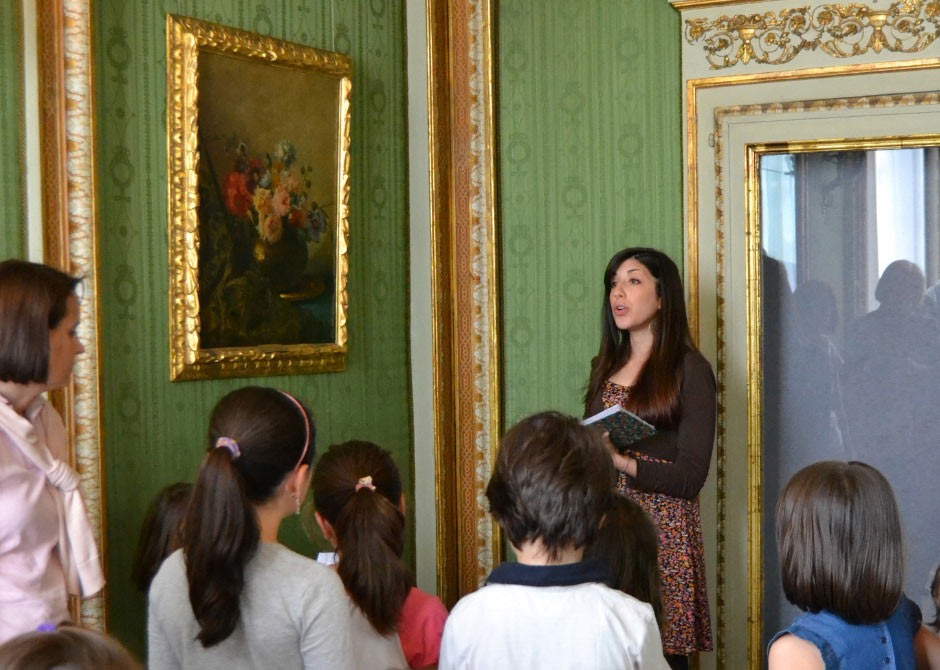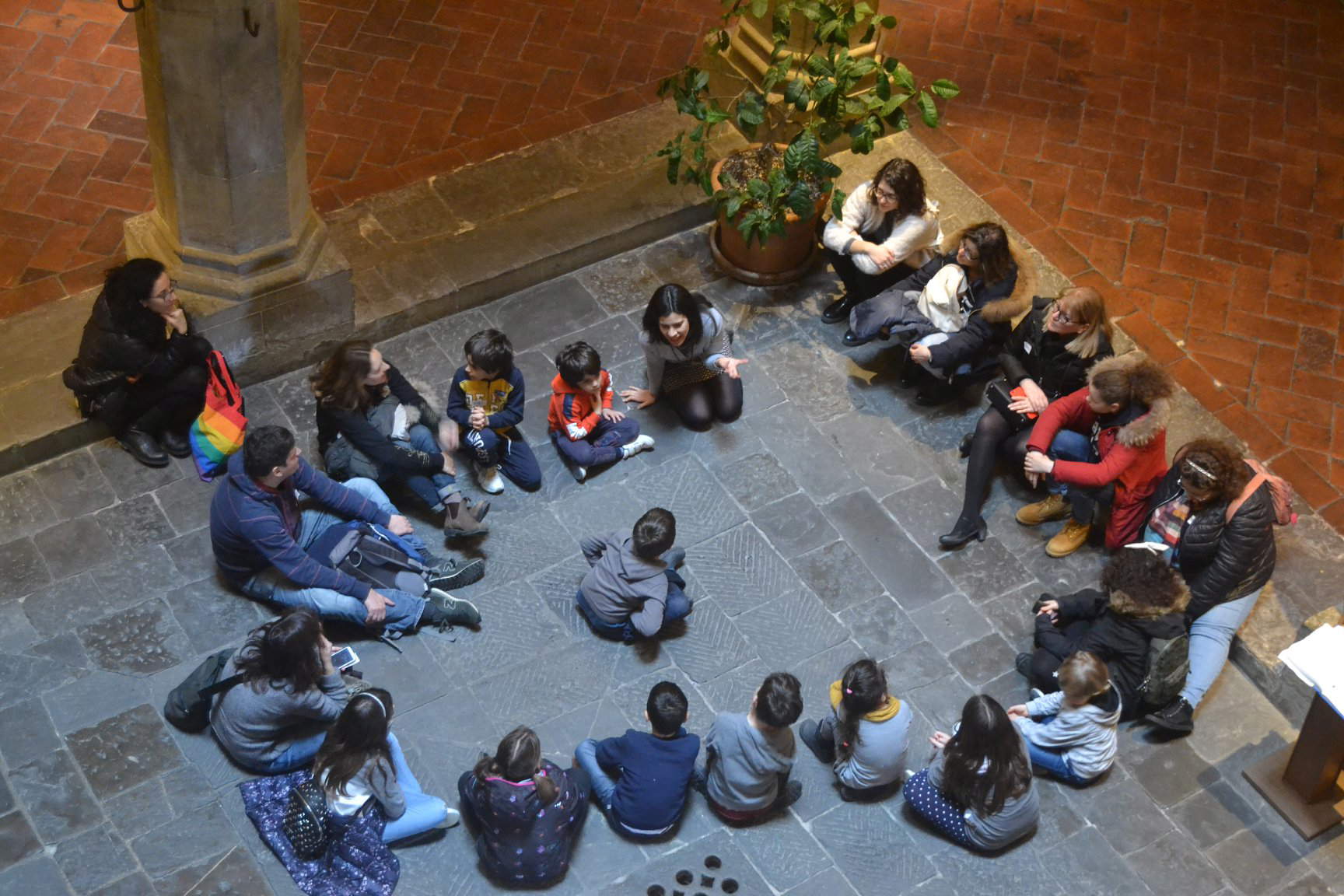On these same pages on Jan. 21, there had been talk of “an issue that no one is talking about,” namely, the fact that Covid has turned schools away from museums. A problem for the museums themselves, for their revenues but also for their ability to impact society. A problem for those who work in those museums, particularly museum educators or mediators, who are among those most affected by the consequences of the closures and restrictions that have occurred since 2020.
Museum education is a recent discipline with a definition that is still not universally agreed upon. We can define it as “the set of tools and methodologies used by museum institutions to make collections, collections, exhibitions and other kinds of cultural exhibits accessible to as many users as possible and to ’different targets’” or again “the set of methodologies and tools used by museum and educational institutions to make collections, collections, exhibitions and in general all kinds of cultural exhibits accessible to a wider audience.” An updated broader definition speaks of heritage pedagogy or heritage education as “a pedagogy based on cultural heritage, integrating active teaching methods, an deployment of disciplines, and a partnership between teaching and culture that makes use of the most diverse methods of communication and expression.”
It is unclear when it was born as an autonomous discipline, first under the name “didactics” and then under the more inclusive name “education,” and even today there is no uniform training path to become a museum educator. Its development is linked, at the national level, to great names in museology, such as Palma Bucarelli, Paola della Pergola, Bruno Munari, Fernanda Wittgens, and Maria Fossi Todorow. In any case, between the 1940s and the 1980s, particularly with the Perugia conference in 1955 and the Rome conference in 1971, the idea that museums needed to develop their educational and social role came to the fore internationally. This is still an ongoing process, as evidenced not only by the global debate on the definition of a museum, but also by the fact that the vast majority of Italian museums do not have an educational department, and that theItalian Association of Museum Educators, AIEM, founded in 2020 and formalized in 2021, is still far from seeing its profession recognized legislatively. “Many museum educators are not aware that they are,” explains Cristina Chiesura of the association’s board, who also mentions that the choice of the term museum educator came after ruling out other terms in use such as educational worker or mediator “having a name by which to define ourselves is the first step in increasing professional self-awareness.”

We asked AIEM what the situation of the profession and discipline is after two years of Covid. We assume that the situation was not rosy even before: most of them were and are working on a VAT basis, not employed by the institutions they work for. Many were working other jobs besides museum educator, which did not allow them to support themselves. And the situation, already fragile, saw a worsening with the onset of the pandemic: education departments, not only in Italy, were the hardest hit by layoffs and termination of collaborations at the time of the spring 2020 closures. The misconception, due to a lack of knowledge about the practice of museum education, but also to the desire or need to save money, was that in the absence of visitors, these workers were useless or superfluous to the “behind-the-scenes” work of the museum.
With the reopenings, many collaborations have been reactivated, but the situation continues to be complex. Indeed, “dramatic. Many of us, after the reset of a few months, have seen a structural drop in orders,” explains Francesca Masotti, an educator and AIEM member, who points out that in many cases the museum educator is seen as someone who can work only with children, so how the stop to school trips, but also the Green Pass (which pushes against organizing group outings so as not to exclude the unvaccinated), or the imposition of small groups has impacted the activities and salaries of many educators and educators. Despite the fact that these workers could and should work with many different audiences, in very many cases they work only with minors and schools, partly due to ignorance of the commissioning institution. In a few enlightened isolated cases, the months of restrictions have been used to expand the audience. In others, the imposition of restricted groups has led museums simply to decide not to offer those (outsourced) educational services to such small groups, thus blocking contracts to companies to outside professionals. There have also been borderline cases: the association gives the example of the Civic Museums of Venice, which decided to keep closed in the orange zone, and which maintained reduced hours for months, instead of using the times when tourists were absent or dwindling for educational and outreach activities aimed at the public.
The 2021 tourist season went well, but with the collapse of school activities, the crisis does not appear to be over. Still Francesca Masotti, points out that in too many cases museum educators were excluded from aid dedicated to tourism or culture, mainly because for several of them museum activities were not the only source of income. With the crisis in the sector, this absence or partiality of aid has led many (impossible to calculate how many, the association explains) to change jobs or supplement museum activities with other commitments, a phenomenon that was already strong before the pandemic. “For every great reality that announces full restart, new projects, there are many more that disappear in silence, that do not have the means to get back up,” Masotti explains.
Among the surviving realities is that of Chiara Lachi, a museum educator and founding member of the association L’immaginario, which works with several museums in the Florentine area. Lachi confirms that although the situation is in relative recovery, January’s programming was almost completely skipped. His association, thanks to pre-pandemic calls and projects, has managed to withstand the impact of closures and is working well, but he confirms the contraction of orders that has hit the sector, “decisions that were obligatory for the museums, even given our work situation, external service providers with whom it did not seem appropriate to carry on activities when the museum was closed.” They, like everyone else, had to reduce the number of staff and hours worked. Lachi is keen to add that “the alarm is that we may think that this work can be done in an artisanal, self-taught way, dispensing with a professionalism that instead has peculiarities” he refers to Tuscan realities he knows, citing the Santa Maria della Scala complex, where it eighth grade was required for operators who should also deal with museum didactics, but also other realities where they are trying to rely on casual collaborators who may know the content but have not developed a specific professionalism in mediating with the public “the risk is a change of approach that, for immediate savings, leads to losing decades of professionalism and acquired experience.”

Just to take a snapshot of a largely unknown situation, AIEM conducted an online survey obtaining about 500 responses from museum educators and educators from all over Italy. The data will be presented at a press conference on Feb. 28, but Finestre Sull’Arte had a chance to view some of the data in advance. Wages are low, often under 12 euros gross per hour, almost never over 30: in many cases the respondent explains that he cannot quantify his hourly pay. These are very often casual hourly wages, since the vast majority of respondents work on a VAT or withholding tax basis. Wages that appeal to specialized professionals: those who responded to AIEM’s questionnaire almost always have a master’s degree, sometimes post-graduate degrees such as master’s or graduate school. A picture similar to that which emerged from questionnaires on other sectors of the cultural sector, but with the not marginal specificity that museum educators work for museums, for public or private but stable institutions, which are ill-suited spaces for occasional collaborations.
Then there is a very relevant aspect that emerges from the AIEM data viewed: many of the museum educators interviewed, who evidently consider themselves as such, if they answered the questionnaire, perform other tasks within the museum facility where they work. In order of frequency, receptionists, ticketing, guarding and bookshop workers, but there is no shortage of cases in which they also take care of checkroom or cleaning. All-round museum workers, with all that that entails for the specialization of the profession and the quality of service, but they somehow comply with ministerial indications: in fact, the Ministry of Culture does not plan to hire museum educators or didactic educators as it may be, but only “AFAVs,” assistants, fruition, reception and supervision. The road to professional recognition of museum educators, but also of the discipline of education as the foundation of contemporary museum action, is still long and bumpy. Unfortunately, government policies that have followed the outbreak of the COVID emergency are posing ever new obstacles and few solutions. But all is not black. “I have to emphasize,” Masotti concludes, "that from below there is a huge need to talk about museum education. Even before we were born, our association was being contacted repeatedly, ICOM is tackling the issue like never before, we are receiving institutional support, and we have created a high-profile scientific and technical committee." Much more than they hoped for: the future of Italian museum education is yet to be written.
Warning: the translation into English of the original Italian article was created using automatic tools. We undertake to review all articles, but we do not guarantee the total absence of inaccuracies in the translation due to the program. You can find the original by clicking on the ITA button. If you find any mistake,please contact us.